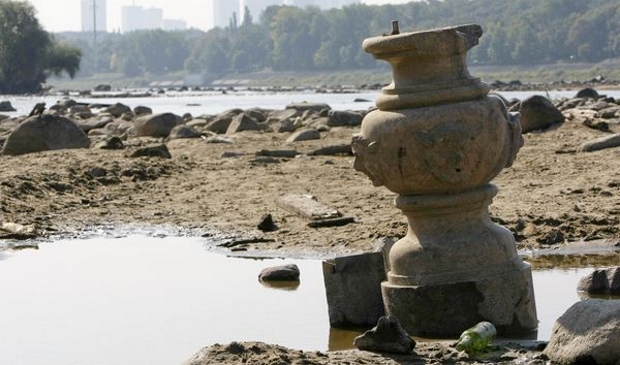
Before the war, the church at Square of Three Crosses was truly a monumental and almost twice as large as today. And around the manicured squares beautiful metal fences were set. In that Warsaw you did not have to regain sidewalks for pedestrians from cars. There was very few cars riding through the streets by then and the driver, who would dare to park on the sidewalk would immediately have to deal with the police. In the same square there was a tram loop abolished only in the 50s of 20th century.
Despite all the pre-war Square of Three Crosses did not let city planners sleep well. Its frontages were frayed. Until the end of 1938 a scruffy bazaar sat next to multilevel building of the early twentieth century, a five-story buildings were standing next to half a century older two-storey houses.
Today, the square of the classical church of St. Alexander rebuilt in the forms of the early nineteenth century and the monumental buildings in the eastern and western frontage is much more harmonious development . It lacks the southern frontage. Here, in place of the magnificent building of secondary school of Queen Jadwiga destroyed in 1944 , there is a monument of Wincenty Witos.
Crosses at the crossroads
Todays Square of Three Crosses was a long time ago called ‘Golden Crosses Crossroads’ and then ‘St. Alexander’s Square’. The modern name given to the square in 1919 does not quite fit the truth. Two baroque columns with gilded crosses issued in 1731 by the architect Joachim Daniel von Jauch commissioned by King Augustus II stand there today. Once it was a begining of Way of the Cross along the existing Al. Ujazdowskie. The third cross is in the hands of St. John of Nepomuk. His stone statue was erected in 1752 to commemorate the completion of the paving of the streets of Warsaw. The fourth cross towering over the green domed neoclassical church.
Grids around the square
Lawns on Square of Three Crosses were a real masterpiece of gardening. Between the trees on carefully mown lawns grew colorful carpets of flowers. However metal fence exerted very special impression. Emerged in the nineteenth century when lawns drove the market square. Originally their function was very prosaic. Were designed to protect against vandals wringing flowers and treading lawns. They quickly became a characteristic feature of the square. Heavily frayed the last time we see the pictures of autumn 1939, during the siege of the city, lawns turned into makeshift cemeteries, and instead of flowers graves started to grown here. During German occupation, graves were exhumed and the bars have gone for scrap. In the spring of 1940 in place of ornamental fences there were only small poles connected with a wire.
Three times the church
Today the church of St. Alexander is going through his “third life”. When designed by Christian Piotr Aigner and built between 1818-1825, it resembled the current building. It was built in the style of classicism as a miniature of the Roman Pantheon. We should add here that the construction of the church in the middle of the square pulled the need to expand the place. The wooden buildings in the northern frontage between Bracka and New World street were demolished.
In the years 1886 to 1895 the church was rebuilt according to the design of Joseph Pius Dziekoński and grew to enormous size. There was a high dome with a lantern on top visible from afar. On the sides there stood the towers.
In this form of the temple lasted until September 1944. After the war it was rebuilt in forms similar to those that Aigner had gave it.
0 komentarzy
Zostaw odpowiedź
Musisz być zalogowany aby napisać komentarz.

